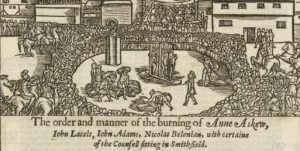See Part A of this two-part series here.
In the last post, we observed how God’s creation of humankind in His image—male and female—demonstrates a clear complementarity between the sexes (Genesis 1:27; 2:20-25). At the same time we also see the strong mutuality between men and women, which continues into the new creation (1Cor 11:11-12). God has made us for relationship; for community. In this way, God and the good world He has placed us in is not enough for us: ‘It is not good for the man to be alone. I will make a helper suitable for him.’ (Gen 2:18 c.f. 19-20)
Two important clarifications are needed at this point:
- This does not mean that an unmarried man or woman is somehow an incomplete human being. Jesus Christ is the True Image; the complete and perfect human being; and he never married. More than this, the way Jesus modelled loving relationships with men and women provides the template for how all men and women—whether married or unmarried—should relate to one another.
- Neither does it mean that God’s grace for us in Christ is somehow insufficient. Rather God (Father, Son and Holy Spirit)—in perfect love relationship from all eternity—does not intend us for splendid isolation, but for relationship.[1] God gathers a people for Himself; on Christ the rock He builds His church. God’s people are bound together in love in Christ; like one coin with two sides. As the Apostle John writes,
We love because He first loved us. Whoever claims to love God yet hates a brother or sister, is a liar. For whoever does not love their brother and sister; whom they have seen, cannot love God, whom they have not seen. And He has given us this command: Anyone who loves God must also love their brother and sister. (1John 4:19-21)
We also saw that because of the ever present reality of sin, we battle with the tendency to push ‘the other ’away: man–woman; woman-man. All too often other people (or other sexes) are reduced to obstacles that stand in the way of our personal quest for greatness (e.g. Mark 10: 42-45 cf. Philippians 2:1-5).
Jesus, by his death on the cross, liberates us from such self-centredness, to live a cruciform life. We live to die every day (e.g. Luke 9:18-27; John 13:1-12 cf. 2Corinthians 4:7-15). Sharing ‘the mindset of Christ’ (Phil 2:5ff) in this way renders questions such as the following wrong-headed and obsolete:
- So, who’s in charge?
- Who has the casting vote in a marriage—the husband or the wife?
- Who gets to be ordained?
Men & women together in God’s household
Whether coming from ‘complementarians’ or ‘egalitarians’, such questions are too often about rights, power and independence. In the life of the church, men and women are interdependent: we need one other! We are to give up ‘rights,’ and the idea of status, which is the ugly side of ‘professional ministry.’ As one writer asks,
Why should men [or women] be called ‘reverend’, and wear a special sort of collar down the street? Nobody else does … Scripture confirms … that men and women have different ministries. Their created natures will be shaped to forward this ministry, and God’s different gifts will be in line with this ministry.[2]
Families can survive under difficult circumstances including when for a period of time or even permanently there is only a father or there is only a mother present. And it is the responsibility of the wider Christian family to encourage and care for families in every situation. But no one should deliberately deprive a child of either their mother or their father. The father cannot be the mother, and the mother cannot be the father.
The goal should always be to work towards a settled community—to the building-up of the Christian household through the exercise of the church’s diverse gifts. And that diversity must include the sometimes similar but always unique expressions of ministry offered up by women and men
Similarly, church ministries (especially in frontier-mission situations) have sometimes begun where there has only been a female leader present—for, of course, it is the gospel of Christ which gives birth to the church (e.g. Romans 1:16-17); not men or women. Yet the goal should always be to work towards a settled community—to the building-up of the Christian household through the exercise of the church’s diverse gifts (1Cor 12:12-31). And that diversity must include the sometimes similar but always unique expressions of ministry offered up by women and men (Titus 2:1-15).
Aquila and Priscilla – Marriage, family & the household of God
The husband and wife team Aquila and Priscilla served together, hosting a church in their home in Ephesus (one of the churches Paul wrote to in 1Timothy). While not the only model of ministry, this is a common one in the church throughout the ages. Husbands and wives are uniquely placed to work in ways that express their combined, as well as their individual, identities as man and woman as they serve other men and women and their families. The love and hospitality they demonstrate towards others, can be an overflow of their shared life together. ‘The family model’ of ministry is an extension of the ministry that is offered in the ‘first congregation’ of the family. In this connection, clear instructions are given to overseers, that each one be a ‘one woman man,’ who is faithful to his wife, and who knows how to ‘manage his family well.’ (1Timothy 3:1-5, 12).
There is no need for us to read back in to such examples more modern and formalised versions of professional ministry. Priscilla and Aquila both served sacrificially and at great cost to their lives as Paul’s fellow-workers. This does not mean that they served in identical ways, or that they were interchangeable. Aquila served God’s people as Priscilla’s husband, and Priscilla as Aquila’s wife (cf. Acts 18:18-26; Rom 16:3-4; 1Cor 16:19)
1Timothy 2:1-15
For a number of reasons, 1Timothy 2:1-15 is an exegetically contested passage (As they say in the classics, ‘consult the commentaries.’). But read together with 1Timothy 3 & Titus 2:1-8 this much is clear: Because of God’s positive and ordered design for male and female together in creation—as is seen with the negative consequences when that design is rejected c.f. 1Tim 2:11-15—overseers in the church are to be men who lead through congregational teaching and women alongside men as they (the women) teach other women. The key instruction from the Pastorals comes in 1Timothy 3:15, which highlights the transcultural nature of gospel ministry in a settled church community in the last days; not just in first century Ephesus where Timothy was based.
…I am writing you these instructions so that…you will know how people ought to conduct themselves in God’s household, which is the church of the living God, the pillar and foundation of the truth. (1Timothy 3:15)
The church is not a pragmatic or ad-hoc human society, but God’s household.
The local congregation takes its character from the family congregation, the ‘church in the house’ (Acts 2:46; Romans 16:5etc). The local church must not conduct its affairs in a way that overturns the structures of the homes which go to make up that congregation and on which the congregation is based…There is no servility in this … ‘Lording it over’ is as vile an attitude as status seeking is on the part of the other … the consequence [and particular expression] of these biblical principles will [necessarily] vary in different cultures.’[3]
A word of testimony
Over the past twenty years it has been my privilege to work as a staff worker in partnership with other staff-workers and university students, together with local churches as part of the AFES (Christian Union, Melbourne). During this time I have served as a ‘team leader’ and (as, is currently the case) ‘a team member.’ Whatever role each one of us is given at any particular time, there has always been one chief aim: To be a servant of others for Christ’s sake. It has never been a question of: ‘who’s in charge?’ but ‘how may I serve?’ In each of the teams in which I have worked, there have always been women and there have always been men working side by side in the cause of Christ: sometimes younger, sometimes older; from different nationalities. We are all one in Christ Jesus and I have been—and continue to be—blessed by Christian men and women who are fearfully, wonderfully and uniquely made; men and women gifted by God in an extraordinary variety of ways.
In each of the teams in which I have worked, I have been—and continue to be—blessed by Christian men and women who are fearfully, wonderfully and uniquely made; men and women gifted by God in an extraordinary variety of ways.
We are brothers and sisters, and co-heirs with Christ in His glorious Kingdom. As we labour in the Lord, we inevitably let one another down, and betray our holy calling. We sin in thought, word and deed and we fail to love one another as God in Christ has loved us. But we also, thankfully and confidently, receive the forgiveness and the fresh start that God gives us through the death of his Son and, by God’s grace, we continue to pursue our holy calling in Christ:
If you have any encouragement from being united with Christ, if any comfort from His love, if any fellowship with the Spirit, if any tenderness and compassion, then make my joy complete by being like-minded, having the same love, being one in spirit and purpose. Do nothing out of selfish ambition or vain conceit, but in humility consider others better than yourselves. Each of you should look not only to your own interests, but also to the interests of others. Your attitude should be the same as that of Christ Jesus. (Philippians 2:1-5)
[1] Lesslie Newbigin., The Light has Come: An Exposition of the Fourth Gospel., (Grand Rapids: Eerdmans, 1982), 175. “…the glory of God is not the self-glorification of a supreme monad; it is the glory of perfect love forever poured out and forever received within the being of the triune God.”
[2] Ed. Kirsten Birkett, D. Broughton Knox: Selected Works, Volume II: Church & Ministry, (Sydney: Matthias Media, 2003), 202, 203.
[3] Ibid, 207.
















